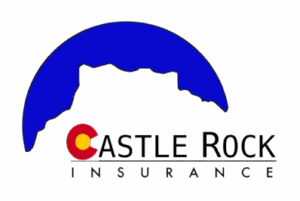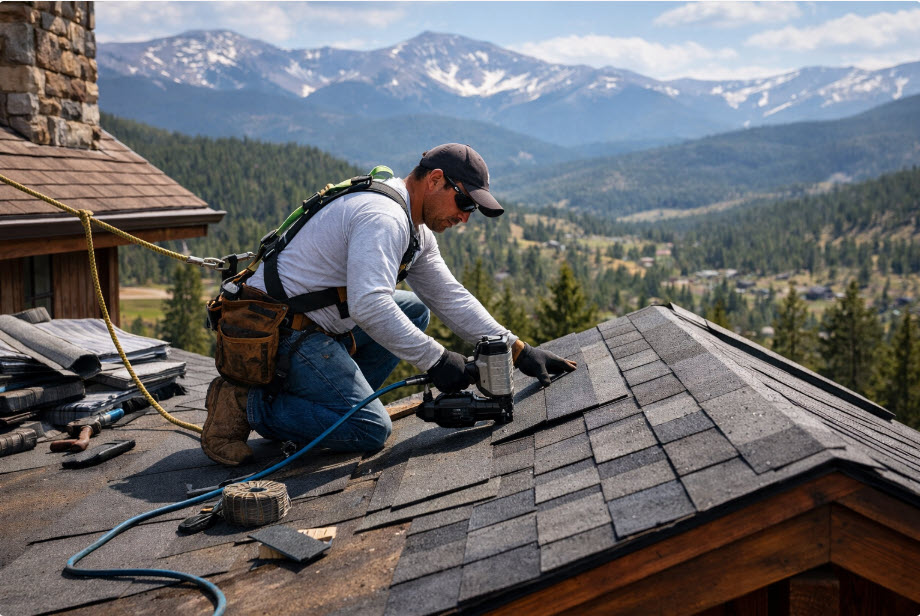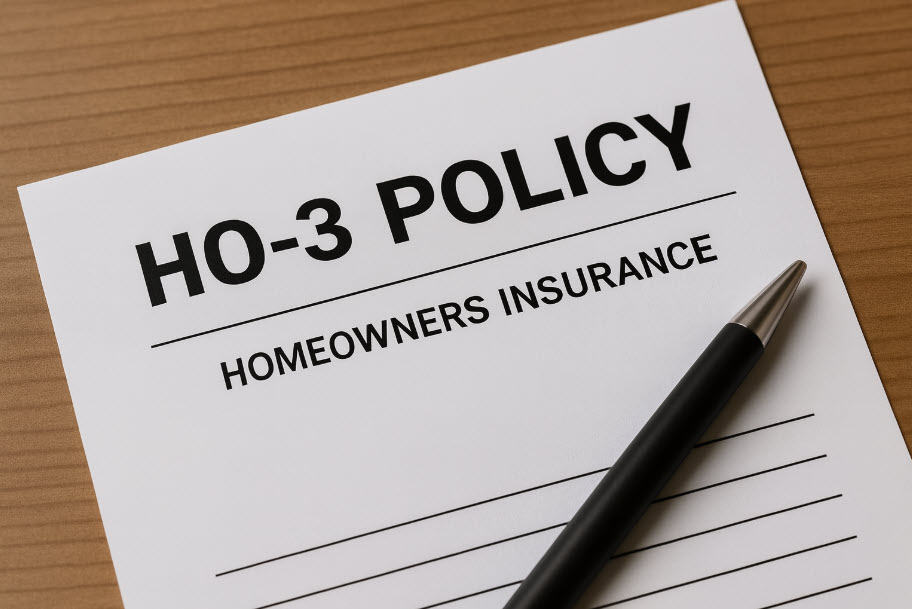It’s officially 2025, Castle Rock! As we welcome a fresh start to the New Year, now is the perfect time to take a closer look at your finances and explore ways to save money without sacrificing protection for your home, car, or business. Living in this vibrant community, with its picturesque neighborhoods and easy access to Colorado’s breathtaking outdoors, means you want to stay prepared for whatever life throws your way. Whether it’s unexpected weather, local risks, or changes in your coverage needs, proactive planning can make a big difference in your wallet.
This year, there are plenty of opportunities to cut costs while ensuring you have the right insurance coverage tailored to your lifestyle in Castle Rock. From bundling home and auto policies to exploring discounts for safety measures like home security systems or anti-theft devices, there are smart strategies to reduce premiums. In this guide, we’ll share actionable tips to help you start 2025 on a strong financial footing, giving you peace of mind and extra savings to enjoy all that Castle Rock has to offer. Let’s dive in!
Overview on Insurance Rates
- How Insurance Rates Have Changed in Recent Years
- Castle Rock Neighborhoods and Their Influence on Insurance Rates
- Weather Risks in Castle Rock
- Crime Rates and Insurance in Castle Rock
- Market Shifts and Insurance Carrier Adjustments
- How Much Does Insurance Cost in Castle Rock?
- Tips for Saving Money on Insurance in Castle Rock
- Castle Rock Insurance: Your Trusted Insurance Partner
How Insurance Rates Have Changed in Colorado
In recent years, Colorado homeowners have faced a dramatic rise in insurance premiums, driven by inflation, natural disasters, and shifts in the insurance market. Between 2018 and 2023, premiums increased by an average of 57.9%, compared to a national average of 33.8% during the same period. These increases are largely attributed to Colorado’s heightened risk for natural disasters, including wildfires and hailstorms. The state ranks second nationally for hail damage claims and nearly half of its residents live in areas at high risk for wildfires, placing enormous strain on insurers and policyholders alike.
The growing financial risk has led many insurance companies to scale back coverage in Colorado, especially in high-risk areas. In 2022, 76% of insurers operating in the state reduced the number of homeowners they were willing to cover, citing increased claims and exposure. High-risk areas, particularly those in wildfire-prone zones, have seen reduced availability of coverage or outright policy non-renewals. Some prominent insurers, such as Farmers Insurance and American National Group, have also exited parts of the Colorado market, leaving fewer options for homeowners.
In response to these challenges, Colorado has taken significant steps to address insurance affordability and availability. In 2023, the state established a Wildfire Resiliency Code Board to create statewide building and fire prevention standards. Additionally, Colorado has introduced a Fair Access to Insurance Requirements (FAIR) plan, set to launch in 2025, which aims to provide coverage for homeowners and businesses in high-risk areas who cannot secure insurance through the private market. These measures, along with increased awareness of mitigation efforts, are designed to stabilize the market and protect vulnerable communities from escalating premiums.
Castle Rock Neighborhoods and Their Influence on Insurance Rates
Castle Rock is a vibrant community with a wide array of neighborhoods and developments, each offering unique characteristics that influence insurance premiums. From luxury gated communities to family-friendly suburban developments, Castle Rock’s neighborhoods reflect a diverse range of lifestyles and insurance needs.
- The Meadows: A family-oriented neighborhood featuring parks, trails, and newer homes built with modern safety features. These homes often include hail-resistant roofing and advanced security systems, which can help reduce homeowners insurance premiums. Proximity to nearby schools and emergency services also contributes to favorable rates for residents.
- Castle Pines Village: This luxury gated community boasts high-value homes with custom features like pools, wine cellars, and advanced smart home systems. These properties require specialized high-value home insurance to cover unique features and higher replacement costs. The gated environment and 24/7 security may help moderate premiums despite the luxury nature of the properties.
- Founders Village: Known for its older homes, this established neighborhood often requires higher premiums due to aging infrastructure like roofs, plumbing, and electrical systems. Upgrades to these features can qualify homeowners for discounts. Proximity to open spaces may also necessitate fire zone coverage for added protection.
- Crystal Valley Ranch: Located near open spaces and trails, Crystal Valley Ranch is a serene neighborhood that offers access to nature but is at higher risk for wildfires. Fire zone insurance is essential for homes here, and proximity to fire stations can help mitigate premium increases. Modern homes in this area often include fire-resistant materials, which may reduce rates.
- Red Hawk Ridge: This golf course community benefits from proximity to emergency services, which helps keep insurance premiums competitive. Homes located along the golf course may require additional liability coverage for potential damage from errant golf balls. The well-maintained streets and modern infrastructure also contribute to lower rates.
- Terrain: A master-planned community with newer homes built using advanced safety features like fire-resistant materials and hail-proof roofing. These features often result in lower homeowners insurance rates. The community’s well-organized layout and nearby schools make it appealing for families, further supporting competitive premiums.
- Plum Creek: A golf course community offering a mix of mid-sized and high-value homes. Recreational amenities like clubhouses and community pools often require specific liability coverage. Proximity to major roads like I-25 may slightly increase auto insurance rates due to traffic density.
- Bell Mountain Ranch: This semi-rural area is known for its equestrian-friendly properties and large lots. Farm and ranch insurance is often necessary to cover barns, outbuildings, and livestock. The rural location can lead to slightly higher premiums due to increased response times for emergency services.
- Cobblestone Ranch and Castlewood Ranch: These newer developments benefit from modern construction standards, including fire-resistant materials and energy-efficient designs, which can lower premiums. However, their proximity to open spaces increases the need for fire zone insurance to mitigate wildfire risks.
- Escavera: A secluded neighborhood with custom homes nestled among mature pine trees. While the environment offers tranquility and privacy, the proximity to dense tree cover increases wildfire risks, making fire zone insurance crucial. Homes in this area may also benefit from discounts for fire-resistant upgrades like cleared defensible space around properties.
- Keene Ranch: This rural neighborhood features sprawling properties with custom-built homes, often requiring specialized insurance coverage for expansive lots, outbuildings, and high-value home features. Proximity to open grasslands increases wildfire risks, emphasizing the importance of fire zone insurance and coverage for rural properties.
- Diamond Ridge Estates: A high-end community with luxury homes that frequently include custom pools, home theaters, and expansive landscaping. These features necessitate tailored high-value home insurance policies. The gated nature of the community and lower crime rates help offset some of the higher premium costs.
- Montaine: A newer development featuring modern homes with state-of-the-art safety features like smart security systems and hail-proof roofs. These features help keep insurance premiums reasonable. The community’s proximity to parks and schools adds to its appeal for families seeking affordable coverage.
- Soaring Eagle Estates: A semi-rural development with large lots and outbuildings. Farm and ranch insurance is often necessary for properties with barns, riding arenas, and livestock. The semi-rural location may slightly increase premiums due to limited access to emergency services.
- Downtown Castle Rock: A vibrant area featuring residential complexes like Encore at Castle Rock and Riverwalk, along with neighborhoods such as Craig & Gould. Modern developments often include safety features like hail-resistant roofing, keeping premiums competitive. Older properties may require additional coverage for aging systems, while the area’s central location and proximity to emergency services help lower premiums. The higher foot traffic downtown also makes liability coverage an important consideration.
Weather Risks in Castle Rock
Castle Rock faces a range of weather-related challenges that significantly influence insurance premiums for homeowners, renters, and vehicle owners. Located in Douglas County, the town’s unique geographic features and climate patterns contribute to its exposure to hailstorms, snow, wildfires, and occasional flooding.
Hailstorms
Castle Rock lies within Colorado’s “Hail Alley,” one of the most hail-prone regions in the United States, making hailstorm damage a leading concern for residents.
- Frequency: Castle Rock experiences an average of five to seven significant hailstorms annually, typically from April through September, with peak activity in May and June.
- Damage Impact: Hailstones in Castle Rock often range from 1 to 3 inches in diameter, with some storms producing baseball-sized hail capable of destroying roofs, vehicles, and outdoor equipment.
- Economic Toll: In 2023, hail-related claims in Douglas County surpassed $1.2 billion, with Castle Rock accounting for a substantial share due to its population density and high-value properties.
- Insurance Implications: Homes equipped with hail-resistant roofing materials like Class 4 shingles and vehicles parked in covered garages can qualify for significant discounts on premiums. Residents may also see reduced rates for policies that include hail-specific endorsements.
Snow and Ice
Castle Rock’s winters bring frequent snowfall and icy conditions, which pose risks to both properties and vehicles.
- Auto Claims: The area experiences an average of 60 inches of snowfall annually, contributing to hazardous driving conditions on major roads like I-25 and Founders Parkway. This increases auto accident rates and impacts insurance premiums.
- Property Damage: Heavy snow loads, especially during storms in February and March, can cause roof collapses and ice damming. Homes with reinforced roofs and proper drainage systems often qualify for lower homeowners insurance rates.
- Slip-and-Fall Liability: Snow and ice on walkways increase liability risks for homeowners and renters. Properties with heated driveways or regularly maintained sidewalks may qualify for reduced liability coverage costs.
Wildfire Risks
Castle Rock’s proximity to open spaces and wooded areas makes certain neighborhoods particularly vulnerable to wildfires, especially during dry summer months.
- High-Risk Neighborhoods: Bell Mountain Ranch, Crystal Valley Ranch, and Cobblestone Ranch face heightened wildfire risks due to their proximity to grasslands and wooded areas.
- Fire Mitigation Efforts: Homes with cleared defensible spaces, fire-resistant siding, and Class A roofing materials can reduce wildfire risk and qualify for insurance discounts.
- Recent Wildfire Data: Douglas County reported over 20 wildfire incidents in 2022, with several occurring within five miles of Castle Rock neighborhoods.
Flood Risks
While not as common as hail or wildfire threats, certain areas of Castle Rock are prone to localized flooding, especially during heavy summer rains.
- FEMA Zones: Properties near East Plum Creek and Cherry Creek occasionally fall within designated floodplains, requiring mandatory flood insurance. Premiums vary based on elevation and distance from waterways.
- Urban Runoff: Rapid development in Castle Rock has increased the risk of urban flooding, particularly in neighborhoods with older drainage systems.
- Insurance Costs: Flood insurance premiums range from $500 to $1,200 annually in Castle Rock, with higher rates for homes in low-lying areas or those without elevation certificates.
Crime Rates and Insurance in Castle Rock
Castle Rock’s reputation as one of the safest communities in Colorado plays a significant role in shaping insurance premiums for its residents. Compared to many urban and suburban areas in the state, Castle Rock enjoys remarkably low crime rates, which directly benefit homeowners, renters, and vehicle owners by keeping insurance costs more affordable.
Property Crime
Castle Rock reports an average of 12 property crimes per 1,000 residents annually, significantly lower than the Colorado state average of 24 incidents per 1,000 residents. Property crime includes burglary, larceny, and vandalism. This lower-than-average rate translates to more competitive premiums for homeowners and renters insurance, as insurance carriers assess risk based on local crime data.
- Impact on Homeowners Insurance: In neighborhoods like The Meadows and Red Hawk Ridge, proactive community safety programs and neighborhood watch initiatives contribute to fewer claims, stabilizing premiums.
- Impact on Renters Insurance: Renters in areas like Downtown Castle Rock and Founders Village benefit from lower rates because of reduced risks for theft and property damage.
Auto Theft
Castle Rock recorded fewer than 50 auto theft cases in 2023, which is significantly below Colorado’s statewide average of 4.7 auto thefts per 1,000 residents. This makes Castle Rock one of the safer areas for vehicle owners, resulting in lower auto insurance premiums.
- Proactive Measures: Neighborhoods such as Terrain and Crystal Valley Ranch benefit from well-lit streets and secured parking areas, further reducing risks of theft.
- Discount Opportunities: Installing anti-theft devices, GPS tracking systems, or steering wheel locks can help residents qualify for additional discounts on auto insurance.
Break-Ins and Vandalism
Break-ins and vandalism are uncommon in Castle Rock compared to other cities in Colorado. This low incidence is a key factor in keeping insurance rates competitive for both homeowners and renters. In neighborhoods like Castle Pines Village and Plum Creek, gated communities and homeowner association (HOA) rules often add an extra layer of security, further reducing risks.
- HOA Impact: Many neighborhoods in Castle Rock have active HOAs that implement safety protocols, such as regular patrols and secure entry systems, which positively impact insurance assessments.
- Property Maintenance: Proper lighting, secure fencing, and maintained landscaping in these areas deter criminal activity, leading to fewer claims and stable premiums.
Violent Crime
Castle Rock experiences only 1.1 violent crimes per 1,000 residents annually, well below the state average of 4.4 incidents. While violent crimes are less directly tied to insurance rates than property crimes, the overall perception of safety contributes to Castle Rock’s attractiveness for residents and insurers alike.
Preventative Measures and Insurance Discounts
Residents of Castle Rock can further improve their safety and reduce insurance costs by implementing preventative measures:
- Home Security Systems: Installing a monitored home security system can lower homeowners insurance premiums by up to 20% while providing peace of mind.
- Secure Doors and Windows: Adding deadbolts and reinforced window locks reduces burglary risks and may qualify for safety discounts.
- Community Engagement: Participating in neighborhood watch programs can deter crime and help maintain lower insurance rates across the community.
- Anti-Theft Devices: Equipping vehicles with anti-theft features like immobilizers or steering wheel locks can result in lower auto insurance premiums.
Market Shifts and Insurance Carrier Adjustments
In recent years, the insurance landscape in Castle Rock, Colorado, has experienced significant shifts, driven by escalating natural disaster risks, rising claims, and evolving market dynamics. These changes have influenced the availability of policies, underwriting guidelines, and insurance premiums for residents.
Carrier Exits and Policy Adjustments
- Esurance’s Withdrawal: In 2024, Esurance discontinued offering homeowners insurance policies in Colorado, including Castle Rock. This decision left many residents scrambling for alternative coverage options.
- American National’s Market Exit: American National Group ceased its homeowners insurance business in Colorado, citing declining profitability due to rising claims and operational costs.
- Underwriting Tightening: Major insurers like Farmers and State Farm have implemented stricter underwriting guidelines, particularly in areas prone to natural disasters. This has resulted in non-renewals for some homeowners in high-risk zones and more stringent policy terms overall.
Factors Driving Market Changes
- Increased Natural Disaster Risks: Castle Rock’s exposure to hailstorms, wildfires, and other severe weather events has prompted insurers to reassess their risk exposure, leading to market exits and higher premiums.
- Rising Claims and Loss Ratios: The frequency and severity of claims in Colorado have surged, with Douglas County alone accounting for over $1.2 billion in hailstorm-related claims in 2023. This has impacted insurers’ loss ratios, making it less profitable to operate in the region.
- Reinsurance Costs: Reinsurance costs, which insurers rely on to cover large-scale disasters, have also risen significantly. This cost increase is often passed down to policyholders in the form of higher premiums.
Castle Rock Insurance’s Response
In response to these market shifts, Castle Rock Insurance has strengthened its partnerships with top-rated carriers, including Safeco, Liberty Mutual, Progressive, Nationwide, and Chubb. By working with over 20 personal and residential insurance carriers, Castle Rock Insurance offers residents a wide range of options to meet their unique needs.
Castle Rock Insurance provides:
- Customized Coverage Solutions: Policies designed to address Castle Rock’s specific risks, such as fire zone and flood insurance for high-risk areas.
- Competitive Pricing: Access to multiple carriers ensures that clients receive the most competitive rates available.
- Expert Guidance: Local expertise helps Castle Rock Insurance recommend strategies like hail-resistant roofing and defensible space for wildfire protection, which can lower premiums.
As the insurance market continues to evolve, Castle Rock Insurance remains dedicated to helping residents navigate these challenges and secure comprehensive, affordable coverage.
How Much Does Insurance Cost in Castle Rock?
Insurance premiums in Castle Rock vary depending on the type of coverage, personal circumstances, property characteristics, and neighborhood-specific risks. Weather-related challenges like hailstorms and wildfires also play a significant role in determining rates. Below is a detailed breakdown of average insurance costs for 2024, including key factors influencing premiums:
- Auto Insurance: $1,400–$2,100 per year
Auto insurance costs are influenced by driving history, vehicle type, and coverage levels. Residents in neighborhoods near I-25, such as The Meadows, may pay slightly higher premiums due to traffic density. Anti-theft devices, a clean driving record, and policy bundling can help reduce rates. - Home Insurance: $1,500–$2,300 per year
Premiums depend on property value, age, and wildfire risks. Homes in Bell Mountain Ranch may require additional fire coverage, while newer homes in Terrain often qualify for lower rates due to modern construction features. Proximity to emergency services can also reduce costs. - Renters Insurance: $130–$300 per year
Renters insurance covers personal belongings and liability. Castle Rock renters in secure complexes like Encore benefit from lower premiums, with optional riders for high-value items available. - Condominium Insurance: $350–$600 per year
Covers personal property, liability, and gaps in HOA policies. Modern condos in Montaine often have competitive premiums thanks to updated safety standards. - High-Value Home Insurance: $3,000–$6,500+ per year
Luxury homes in Castle Pines Village require specialized policies to cover features like pools, custom finishes, and valuables such as jewelry or collectibles. - Farm and Ranch Insurance: $1,500–$4,500 per year
Covers barns, equipment, and livestock for properties in semi-rural areas like Keene Ranch. Costs vary by property size and scope of farming operations. - Flood Insurance: $500–$1,200 per year
Required for homes near East Plum Creek or in flood zones. Elevation certificates and location in low-risk areas may lower premiums. - Fire Zone Insurance: $400–$900+ per year
Essential for homes near wildfire-prone areas like Crystal Valley Ranch. Using fire-resistant materials and creating defensible space can reduce premiums. - Personal Umbrella Insurance: $200–$600 per year
Provides liability protection beyond standard home and auto policies, ideal for residents with high-value assets or liability risks. - Pet Insurance: $300–$700 per year
Covers medical costs for pets, including accidents and illnesses. Pet owners in Castle Rock often choose policies to ensure comprehensive veterinary care. - RV Insurance: $400–$1,200 per year
Protects recreational vehicles against damage, theft, and liability. RV owners traveling in or around Castle Rock’s scenic areas benefit from comprehensive policies. - Mobile Home Insurance: $500–$1,500 per year
Provides coverage for structural damage, personal belongings, and liability. Policies for mobile homes in Castle Rock are influenced by location and home value. - Motorcycle Insurance: $300–$800 per year
Covers liability, collision, and theft. Riders in Castle Rock benefit from bundling options to save on premiums. - Sports & Luxury Car Insurance: $2,500–$8,000+ per year
Specialized coverage for high-performance and luxury vehicles, factoring in replacement value and repair costs. Castle Rock residents often combine these policies with umbrella insurance for enhanced protection.
Tips for Saving Money on Insurance in Castle Rock
Castle Rock residents have several opportunities to lower their insurance premiums without compromising on coverage. By understanding local risks, upgrading safety features, and taking advantage of available discounts, homeowners, renters, and drivers can achieve substantial savings. Here are some practical tips:
- Bundle Policies: Combine home, auto, and renters insurance under the same carrier to save up to 15%. Bundling not only reduces costs but also simplifies policy management.
- Upgrade Safety Features: Installing hail-resistant roofing, fire-resistant materials, and home security systems can significantly lower premiums for homeowners. Similarly, equipping vehicles with anti-theft devices and advanced safety features like collision avoidance systems can reduce auto insurance costs.
- Choose Higher Deductibles: Opting for a higher deductible on home or auto policies can result in lower monthly premiums. Ensure that the deductible amount is affordable in case of a claim.
- Maintain a Clean Driving Record: Avoiding accidents and traffic violations can qualify drivers for safe driver discounts, which can significantly reduce auto insurance rates.
- Leverage New Home Discounts: Newly constructed homes in neighborhoods like Montaine and Terrain often qualify for discounts due to compliance with modern building codes and advanced safety features.
- Proactive Fire Mitigation: In wildfire-prone neighborhoods like Bell Mountain Ranch and Crystal Valley Ranch, creating defensible space, using fire-resistant materials, and installing sprinkler systems can help reduce premiums.
- Invest in Flood and Fire Coverage Wisely: For properties near floodplains or wildfire zones, ensure that you have adequate coverage. Taking steps such as obtaining elevation certificates for flood-prone homes can help lower premiums.
- Request Claims-Free Discounts: Many insurance carriers offer discounts for homeowners and drivers who have not filed claims for several years.
- Insure Multiple Vehicles: Families with multiple vehicles can save by insuring them under one policy, qualifying for multi-vehicle discounts.
- Work with a Local Broker: Castle Rock Insurance partners with over 20 carriers, offering tailored options that address local risks like hailstorms, wildfires, and traffic density. Their local expertise ensures you find competitive rates without sacrificing coverage.
By implementing these strategies and working with a knowledgeable broker like Castle Rock Insurance, residents can navigate Castle Rock’s unique risks while saving on their insurance policies.
Get a Quote With Independent Insurance Broker
Castle Rock Insurance is dedicated to providing residents with reliable and personalized insurance solutions. With a strong understanding of the unique challenges faced by Castle Rock homeowners, renters, and drivers, this local agency is equipped to offer comprehensive coverage options that fit your needs and budget.
Partnering with over 20 top-rated carriers, including Safeco, Liberty Mutual, Progressive, Nationwide, Chubb, American Modern Insurance, American Strategic Insurance, Auto-Owners Insurance, Berkshire Hathaway GUARD, Bristol West, Dairyland, Encompass, Foremost, Hagerty, Kemper, Mendota, Neptune Flood, PURE, State Auto, Stillwater, Travelers, and Vault, Castle Rock Insurance ensures that you have access to a variety of policies tailored to Castle Rock’s specific risks. Whether you need auto insurance for navigating I-25, homeowners insurance for properties in wildfire-prone areas like Crystal Valley Ranch, or specialized high-value home insurance for luxury properties in Castle Pines Village, Castle Rock Insurance has you covered.
Why Castle Rock Insurance Stands Out
- Local Expertise: As a locally focused agency, Castle Rock Insurance understands the unique risks and challenges faced by Castle Rock residents. They offer neighborhood-specific recommendations, such as fire zone coverage for homes near open spaces or hail-resistant roofing discounts for newer properties.
- Comprehensive Coverage: Castle Rock Insurance provides a wide range of policies, including auto, home, renters, condominium, high-value home, farm and ranch, flood, fire zone, and personal umbrella insurance. Their diverse offerings ensure that every resident can find the right coverage for their needs.
- Competitive Rates: With access to multiple carriers, Castle Rock Insurance shops for the best rates and discounts. From bundling policies to claims-free histories, they help you maximize savings without sacrificing protection.
- Exceptional Customer Service: Castle Rock Insurance prioritizes building long-term relationships with their clients. Their team is available to answer questions, assist with claims, and make policy adjustments to ensure your coverage evolves with your needs.
- Proactive Risk Management: Castle Rock Insurance goes beyond standard policy offerings by advising on proactive measures to reduce risk. From fire mitigation strategies to hail-resistant upgrades, they help you lower premiums and enhance safety.
With its extensive network of trusted carriers and commitment to personalized service, Castle Rock Insurance stands out as a reliable partner for protecting what matters most.






